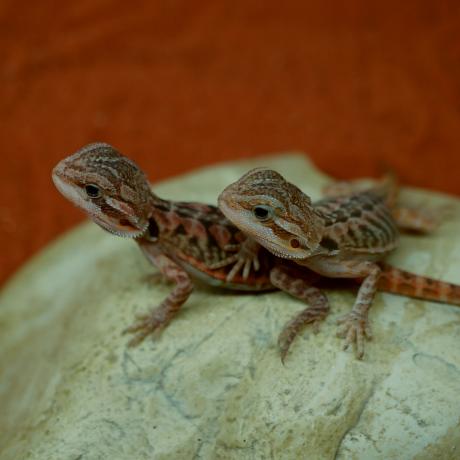
But, at its coolest, the temperature should reach no less than 80 degrees Fahrenheit (27 degrees Celsius).Ĭertain studies have shown that bearded dragon diets tend to consist of primarily vegetable matter, with a small amount of animal matter. Ideally, your bearded dragon should get 12 hours of light, and 12 hours of darkness. All bearded dragons need ultraviolet B radiation and infrared heat lamps that keep the temperature between 95 and 105 degrees Fahrenheit (35 to 41 degrees Celsius). Include shelters within for your leatherback to use, as well as branches and rocks for climbing. Glass tanks are a popular option, ideally giving your pet as much space as possible. Leatherback bearded dragon care is very similar to that of a regular bearded dragon. So, they can be harder to find than a regular bearded dragon.

The leatherback scaling is caused by certain gene mutations. However, because of the scale texture and size on a leatherback, their coloring may appear more vivid. Other than this, the two are very similar. Of course, individuals will vary, but generally a leatherback will feel and look much smoother. A regular bearded dragon, on the other hand, will have rough, spiked scales all down their back. Both will have scales, but the leatherbacks scales will be much smaller and smoother on their back. We’ve already covered this briefly throughout the guide so far, but what is the major difference between a leatherback and a regular bearded dragon? The main difference lies in their scale size. Just make sure not to overfeed them! Leatherback vs Regular Bearded Dragon Associating handling with little treats can be a great way to help your leatherback enjoy being held. But, make sure you are always very gentle, and never force your little dragon to do anything that makes them seem scared or uncomfortable. To encourage a friendly and social personality, you should handle your leatherback from a young age. Some may be very social and keen to interact with you, whereas others may be more relaxed and aloof. However, it’s important to bear in mind that, like all animals, each leatherback bearded dragon will have an individual personality. Most owners report that their leatherback dragons are friendly, and can make great first time pets. Are Leatherback Bearded Dragons Friendly? So, it may take you a little longer to find a good breeder with these colors available. Two of the most popular colors are the red leatherback bearded dragon and the citrus leatherback bearded dragon. You may also be able to find leatherbacks with certain patterns, like the tiger leatherback bearded dragon, which has a pattern of stripes down its back. Leatherbacks come in a wide variety of colors, including: This is a huge factor in their popularity. However, since these scales are smoother and smaller than a regular bearded dragon, they can often look more pigmented. The leatherback morph is categorised by their scale size. What Colors do Leatherback Bearded Dragons Come In? Although their scales are much smaller than a regular bearded dragon, their body size tends to be very similar. However, some may fall slightly outside of this bracket, with some owners reporting 25 inches in length when fully grown! This size includes the length of their tail. On average, leatherback bearded dragons tend to reach between 16 and 22 inches in length. How Big do Leatherback Bearded Dragons Get? Although the extent of this may differ from one individual to the next. They will still have the same spiked scales on their heads and sides. Leatherback bearded dragons still have scales (unlike the silkback morph), but the scales on their back are much smaller and smoother than a regular bearded dragon. Leatherbacks get their names from their smooth backs, unlike regular bearded dragons who have spiked scales covering their entire backs. The main difference for this morph is in its scales. So, a leatherback is still a bearded dragon, but it’s slightly different to a standard or regular bearded dragon. Morphs each have slight differences, such as variations in size, color, and even scale dispersal. These morphs are simply different mutations of the reptile. Like some other reptiles, bearded dragons come in different ‘morphs’.
#Red translucent leatherback bearded dragon how to#
So, let’s take a closer look at what this morph is, and how to care for one.


For instance, leatherbacks are at higher risk of dehydration than regular bearded dragons. But, these unique scales have some specific care needs. Leatherback bearded dragons are a popular morph. This means their coloring is also more intense than a regular bearded dragon. Although they will still often have spikes on their heads and sides, their backs will be completely smooth.

They have smaller scales than regular bearded dragons. A leatherback bearded dragon is a type or morph or mutation.


 0 kommentar(er)
0 kommentar(er)
